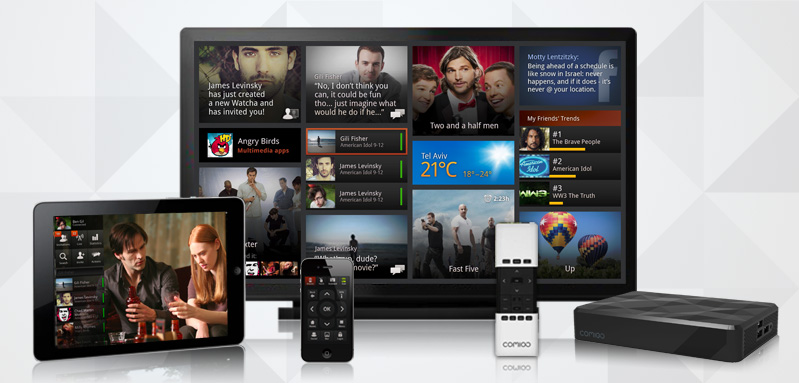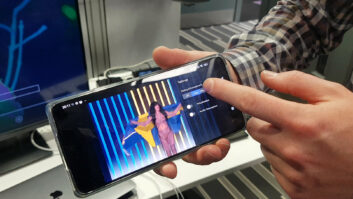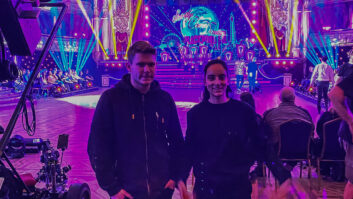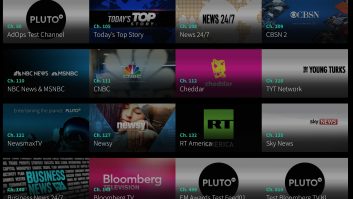
By Sigalit Klimovsky, CMO, Comigo
The rise in new technologies and smart handheld devices has coincided with significant changes in consumer TV viewing habits. Consumers today have high expectations when it comes to their TV viewing experience. They want movie recommendations that fit their personal taste, they want to vote in a realtime poll about which celebrity wore the best outfit on the red carpet, they want to chat with friends about reality show episodes, and they want to be able to do it all directly from their TV screens, smartphones, and tablets.
Today’s television viewers are no longer sitting back, waiting for content. Rather, they’re watching a variety of content, including live channels, VoD, and online videos on the big screen while simultaneously browsing the internet and enaging with others through social media like Facebook or Twitter on a laptop, smartphone or tablet. They are texting friends for recommendations about the hottest new movies, turning to the internet to find out more about a favourite actor or actress, and then looking on Netflix for other movies starring that person.
Today’s active engagement between the consumer and the viewed content is made possible by the explosion in the number of deployed connected devices. Recent research from Cisco shows that the number of mobile-connected devices will exceed the number of people on earth by the end of 2014. By 2016, there will be an incredible 10 billion mobile-connected devices.
Such a scenario is definitely advantageous for TV operators that seek to provide a connected, next-generation user experience to their customers. There are three key components that enable operators to build a solid strategy for increasing customer satisfaction with the service they offer and, in turn, boost their revenue streams.
1. Personalisation, socialisation, and interaction
Watching TV is increasingly becoming an activity that is personal, social, and interactive. And it shows no signs of slowing down. Recent research shows that social media has become an important part of consumers’ everyday lives, including their television experience. Nielsen states that in 29 per cent of cases, Twitter chatter causes an increase in live TV viewership.
The good news for TV operators is that social media platform usage is not competitive to, but is complementary to television viewing. Viewers are actively using the social media platforms to see what friends are recommending, sharing their opinion with others, chat, communicate, and interact.
TV viewers also want access to a variety of applications relevant to live shows they watch. They want to play and interact, participate in votes and polls, view extended programming information, and much more.
Quite complementary to such viewing habits, delivering personalised content is becoming easier as TV operators now have the ability to monitor and analyse what their customers are watching and predict the content each viewer is more likely to watch. Additionally, next-generation TVs and set-top boxes (STBs) are embedded with automated face recognition technologies that play an integral role in providing this personalised TV experience by identifying who the viewer is and which content and advertising capture his attention.
2. TV anytime, anywhere, on any device
Viewers today want choices to watch the content they like through live channels, VoD, online videos, and personal movies, whether they are at home or on the go. How can operators satiate consumer’s thirst for more choices? The answer is by extending the television viewing experience beyond the traditional TV set and onto multiple devices, while keeping the viewer’s identity on the cloud. Nielson recently reported in an article ‘Connecting With Social Brand Ambassadors’, that from January – April 2014 in the US, 361 million tweets were sent related to content on the TV. This indicates that viewers are actively engaging in social TV today, and therefore operators can no longer ignore this trend, but harness its possibilities into their current services.

Clearly, the way we communicate today is vastly different than even just five or 10 years ago. Gone are the days when mobile phones were just used for calling friends and family — now they’re capable of doing so much more. We are expected to be connected at all times, and in doing so we are exposed to mountains of online information, including video and TV content, our friends’ activities, and different sources of our favourite interests.
As an operator, being able to filter that information and offering it in an intuitive way are important. The TV user experience must enable viewers to receive the relevant information, interactivity and content via a simple user interface. TV viewers will be able to create their own watch list, view their personal favourite channels, receive relevant online content, and be recommended the most relevant content based on their own tastes. This includes advertising as well because it must be targeted toward the viewers’ individual tastes and habits to achieve the best results.
3. E-commerce
Consumers are increasingly using their smartphones, tablets, and PCs to purchase services and products. E-commerce portals are gaining popularity because they simplify the shopping experience. Imagine the ability to purchase items that are relevant to the content you watch on your TV: merchandise from your favourite soccer team, the meal that was just prepared on a cookery show, or a holiday package for the same destination being presented on a reality show. Offering e-commerce capabilities as part of the viewer’s user experience is therefore another key attribute amounting to the TV operators’ business success.
Making the next-generation user experience become a reality
Now that we’ve taken a look at the next-generation TV experience, we need to ask ourselves – how real is it? Obviously, the 20-year-old legacy platforms are not going to be able to support an interactive user experience. In a fast-paced world with immediate demand for connection and multiple devices around us, TV operators need to be able to react quickly should they wish to retain the customer base and grow in this new domain. If operators want to provide a more exciting television experience, and move quickly in launching new services, they need to migrate to an open, cloud-based, fully controlled TV platform.
This type of TV platform will put pay-TV operators ahead of the competition by enabling them to provide a TV experience, as was described throughout this article, that is exponentially more social, personal, engaging, consistent, and satisfactory to viewers. It will provide operators with the flexibility to add revenue-generating services and products, generate micro-targeted campaigns, promote campaigns through the viewers social networks, maximise the effectiveness of its advertisement, monetise better its premium content, quickly and without any additional investment. By adopting this type of platform, operators can deliver a more compelling TV experience at the living room as well as on any mobile screen.
Learn more about innovative TV user experience at www.comigo.com







